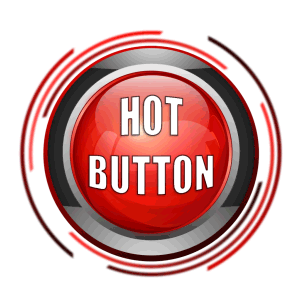Cooling Hot Buttons
Conflict pushes our emotions in many directions.
“Anger” is, after all, just one letter away from “Danger”. Leaders, who are in control and professional, often reflect on their responses before, during and after conflict.
The phrases below represent comments from coaching sessions in which people lost control and used destructive behaviors during conflict at work.
“I was so mad. I was seeing red.”
“I couldn’t take it anymore and blew up.”
“S/he really knows which buttons to push.”
“I went over the edge with anger and just lost it.”
The Conflict Dynamics Profile (CDP) is a tool that gauges hot buttons, as well as, constructive and destructive responses to conflict.
Hot buttons are those situations or behaviors that can upset individuals enough to cause them to overreact in destructive ways. They are triggers that can start or sustain the conflict cycle.
Understanding our hot buttons can help us control the intensity of what we do or say.
The CDP has identified nine workplace hot buttons:
- Unreliable – when people miss deadlines or cannot be counted on
- Overly Analytical – when people focus too much on minor issues or are perfectionists
- Unappreciative – when people fail to give credit to others or seldom praise good performance
- Aloof – when people isolate themselves, do not seek input or are hard to approach
- Micromanaging – when people constantly monitor and check up on the work of others
- Self-Centered – when people believe they are always correct or care only about themselves
- Abrasive – when people are arrogant, sarcastic and demeaning
- Untrustworthy – when people exploit others, take undeserved credit, or cannot be trusted
- Hostile – when people lose their tempers, become angry or yell at others
Hot buttons vary greatly from person to person. Many theories suggest that they are developed over time from life experiences. Whatever the origin, hot buttons carry an emotional charge that when pushed cause us to react.
The first step in understanding your own hot buttons is to examine what kinds of behaviors make you angry or upset. What gets you off balance? What kinds of things send you reeling? Develop a consciousness about it. Learn to stop yourself from an instant response which you may later on regret.
Author and health expert, Melinda Beck, suggests some positive preventative measures for cooling hot buttons.
- Reframe the situation. Instead of a personal affront from the other person, imagine a benign explanation.
- Identify your hot buttons by keeping a log of them.
- Be aware of how you talk to yourself. If you keep saying how awful the situation is, you make yourself a victim and get angrier.
- Don’t ruminate on past affronts or injustices.
- Recognize the patterns. Did your parents have the same hot buttons?
- Be aware that hot buttons and anger tend to rise in increments. Learn to evaluate yours on a 1-10 scale. Can you stop yourself at 3 or 4 and create a more positive outcome?
- Take a brisk walk – get away from the situation.
- Pay attention to the important things in life. Don’t let your hot buttons rule you.
As leaders we are role models for the people around us. We have the ability to choose our behaviors and the intensity with which we react.
Everyone encounters difficult situations that require advanced coping skills. Use your awareness of hot buttons to provide you with ways to successfully work with others.
Resource: Becoming a Conflict Competent Leader – How You and Your Organization Can Manage Conflict Effectively, by Craig E. Runde and Tim A. Flanagan
“The most important trip you may take in life is meeting people half way.”
Henry Boyle